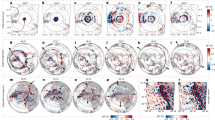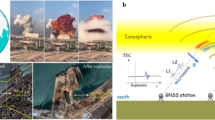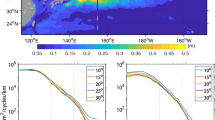Abstract
SINCE 1925, I have made observations upon the signal strength of KDKA in Pittsburg. The observing station at Morgantown, West Virginia, is sixty miles due south of KDKA. My results are in complete agreement with the discoveries of Prof. Ivo Ranzi1, provided I assume that the 309-metre wave from KDKA behaves like a 100-metre wave in so far as tho E layer is concerned.
This is a preview of subscription content, access via your institution
Access options
Subscribe to this journal
Receive 51 print issues and online access
$199.00 per year
only $3.90 per issue
Buy this article
- Purchase on Springer Link
- Instant access to full article PDF
Prices may be subject to local taxes which are calculated during checkout
Similar content being viewed by others
References
NATURE, 130, 368, Sept. 3, 1932.
Proc. West Virginia Acad. Sci. 1929, p. 234.
Proc. Inst. Radio Eng., vol. 17, No. 1, January 1929, p. 143.
Phys. Rev. Ser. 2, vol. 37, 1932, p. 464, No. 33.
Author information
Authors and Affiliations
Rights and permissions
About this article
Cite this article
COLWELL, R. Atmospheric Conditions and the Kennelly-Heaviside Layer. Nature 130, 627–628 (1932). https://doi.org/10.1038/130627a0
Issue Date:
DOI: https://doi.org/10.1038/130627a0
This article is cited by
Comments
By submitting a comment you agree to abide by our Terms and Community Guidelines. If you find something abusive or that does not comply with our terms or guidelines please flag it as inappropriate.



